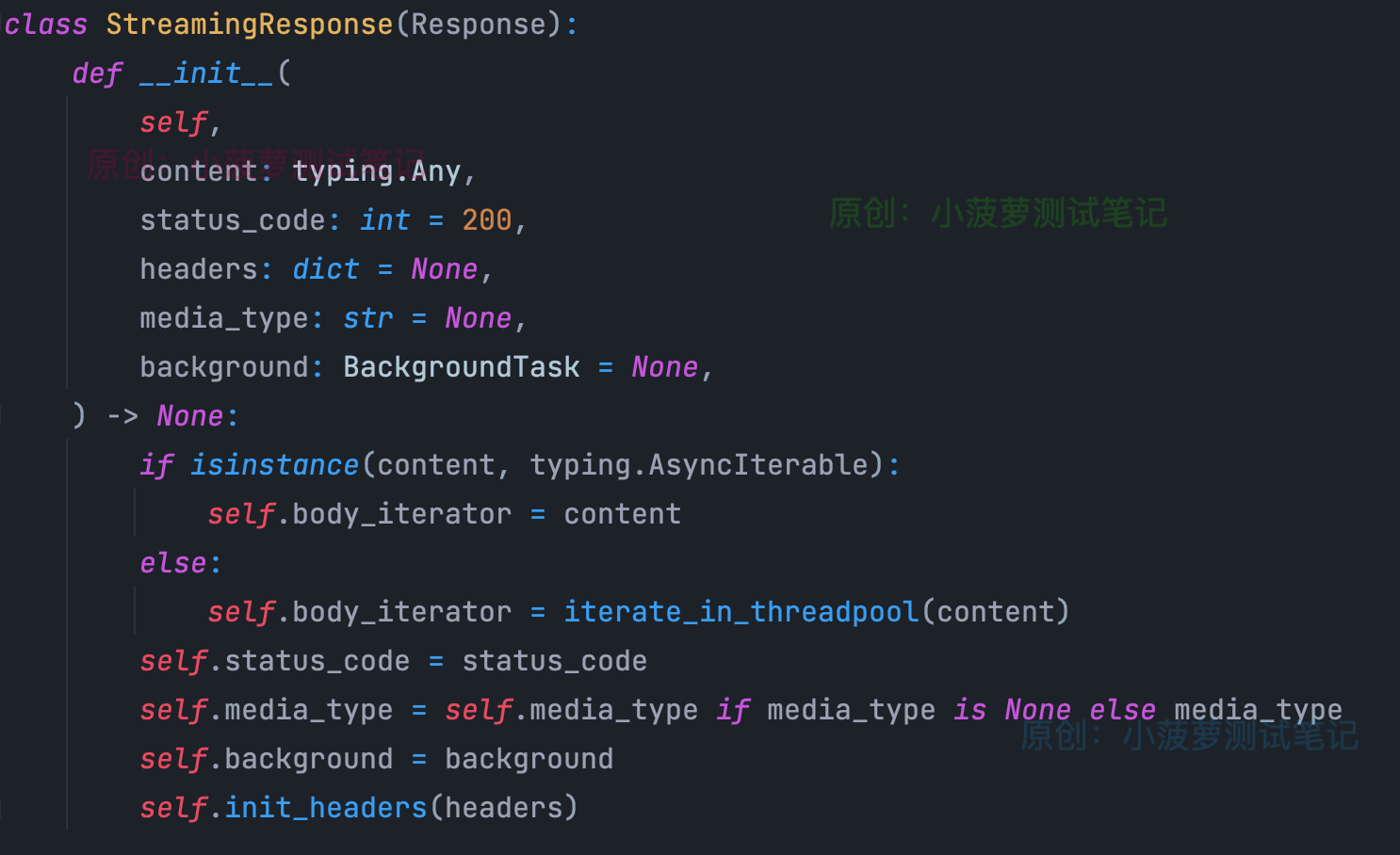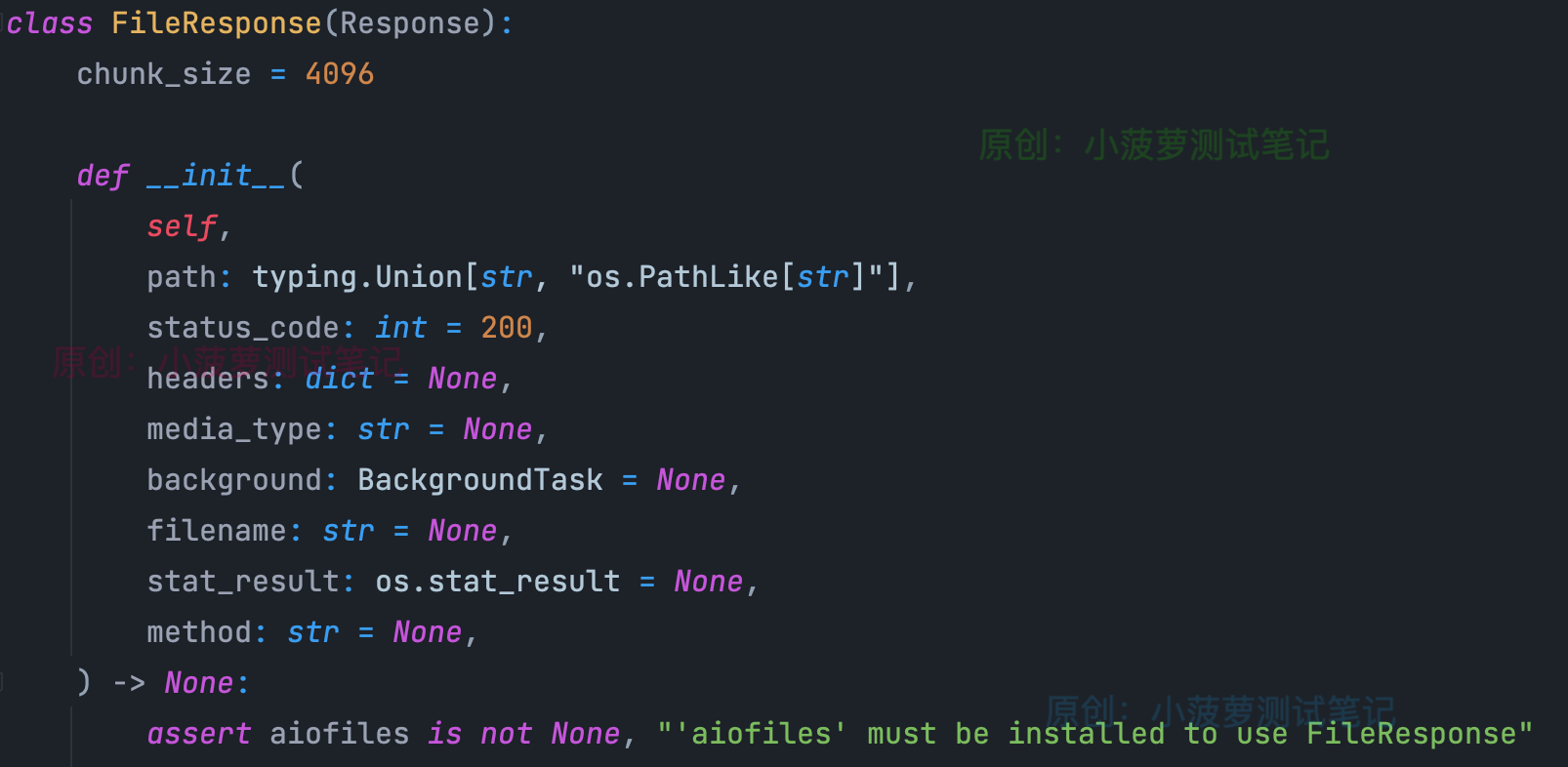更多自定义响应类型
StreamingResponse
作用
采用异步生成器或普通生成器(generator)/迭代器(iterator)流式传输响应数据
实际代码
from fastapi import FastAPI from fastapi.responses import StreamingResponse file_path = "test.mp4" app = FastAPI() @app.get("/") def main(): # 这是生成器函数。它是一个“生成器函数”,因为它里面包含了 yield 语句 def iterfile(): # 通过使用 with 块,确保在生成器函数完成后关闭类文件对象 with open(file_path, "rb") as file_like: # yield from 告诉函数迭代名为 file_like 的东西 # 对于迭代的每个部分,yield 的内容作为来自这个生成器函数 yield from file_like return StreamingResponse(iterfile(), media_type="video/mp4")
- 如果有一个类文件对象(例如 open() 返回的对象),可以创建一个生成器函数来迭代该类文件对象
- 这样,不必首先在内存中读取所有内容,可以将该生成器函数传递给 StreamingResponse,然后返回它
- 这包括许多与云存储、视频处理等交互的库
请求结果

返回了视频啦!
源码

FileResponse
作用
异步流式传输文件作为响应,重点一定是异步的
实际代码
from fastapi import FastAPI from fastapi.responses import FileResponse file_path = "test.mp4" app = FastAPI() @app.get("/file", response_class=FileResponse) async def main(): return file_path
感觉这个比 StreamimgResponse 简单多了
请求结果

和上面 StreamingResponse 一样,也返回了视频啦!
源码
